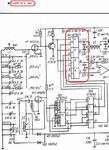gbugh
Member level 5
- Joined
- Mar 15, 2013
- Messages
- 80
- Helped
- 1
- Reputation
- 2
- Reaction score
- 1
- Trophy points
- 1,288
- Location
- Fort Worth, Texas
- Activity points
- 2,236
I started out designing a transceiver with a Tayloe detector as part of it, to help me learn all this RF stuff better but at the same time I was hoping if I made something worth while I could supplement my retirement income enough to pay the bills each month.
Boy was I naive! I found out about how bad intellectaul property issues can be. First I asked Dan Tayloe if I could pay Motorola to use his patent and he said Motorola had sold it. Then I found some French company that buys up intellectual property had bought it apparently. They never responded to my request to pay a license fee or something.
Then I saw that there is possible prior art: The D. H. van Graas Detector, the MerryGo or Merigo Japan patented circuit and the Rodney Green Australia patented dirodyne circuit. I see Gerald Youngblood and others have subsequently patented their own version of it also.
Then I saw a huge court battle between Qualcomm and Parkervision and it seemed to be over the same design but I never saw where either of them had bought rights from Dan Tayloe/Motorola or from any other of the prior art inventors.
Does anyone know if it has been decided that this design is open source now? I see so many SDR radio designs using it.
George
Boy was I naive! I found out about how bad intellectaul property issues can be. First I asked Dan Tayloe if I could pay Motorola to use his patent and he said Motorola had sold it. Then I found some French company that buys up intellectual property had bought it apparently. They never responded to my request to pay a license fee or something.
Then I saw that there is possible prior art: The D. H. van Graas Detector, the MerryGo or Merigo Japan patented circuit and the Rodney Green Australia patented dirodyne circuit. I see Gerald Youngblood and others have subsequently patented their own version of it also.
Then I saw a huge court battle between Qualcomm and Parkervision and it seemed to be over the same design but I never saw where either of them had bought rights from Dan Tayloe/Motorola or from any other of the prior art inventors.
Does anyone know if it has been decided that this design is open source now? I see so many SDR radio designs using it.
George
Last edited:
